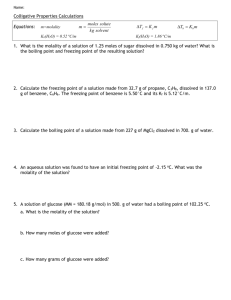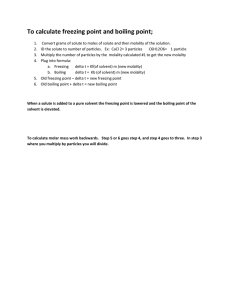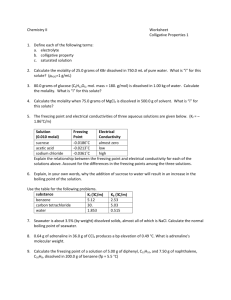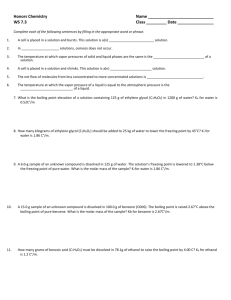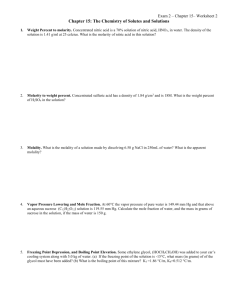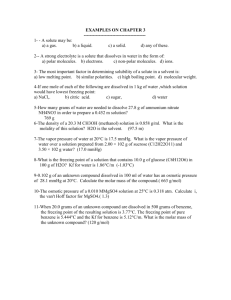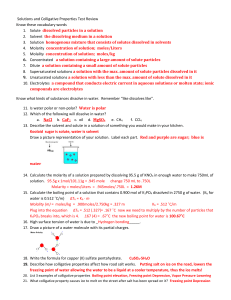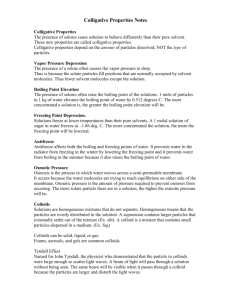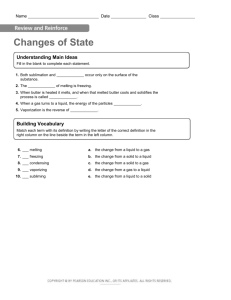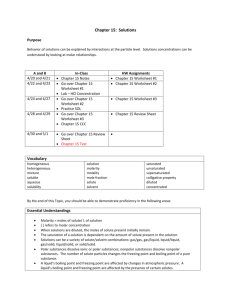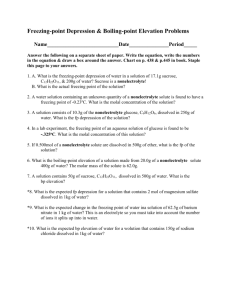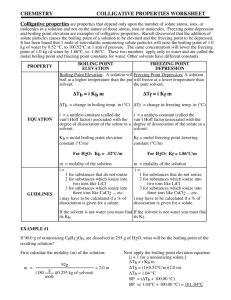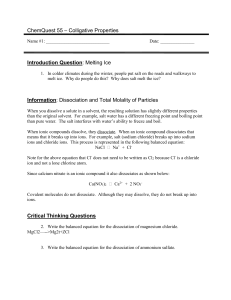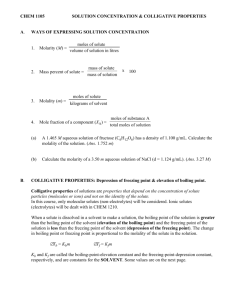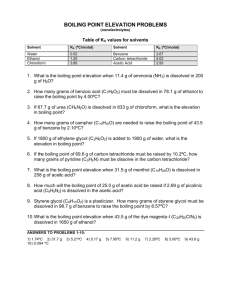SolutionsColligativeProp
advertisement
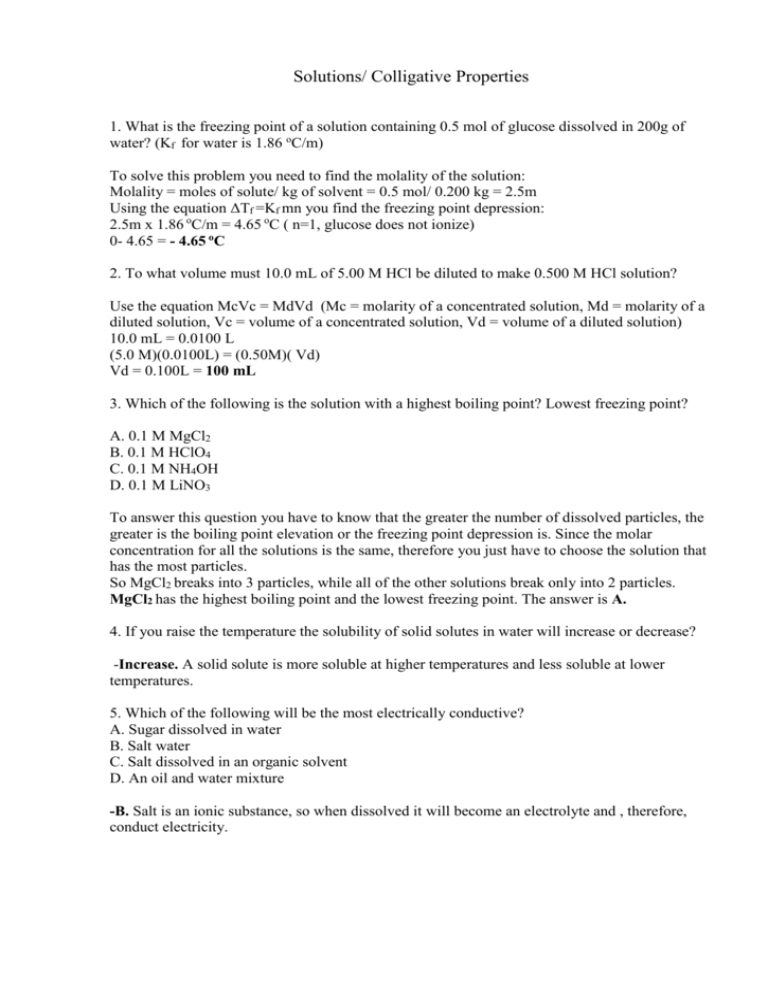
Solutions/ Colligative Properties 1. What is the freezing point of a solution containing 0.5 mol of glucose dissolved in 200g of water? (Kf for water is 1.86 oC/m) To solve this problem you need to find the molality of the solution: Molality = moles of solute/ kg of solvent = 0.5 mol/ 0.200 kg = 2.5m Using the equation ΔTf =Kf mn you find the freezing point depression: 2.5m x 1.86 oC/m = 4.65 oC ( n=1, glucose does not ionize) 0- 4.65 = - 4.65 oC 2. To what volume must 10.0 mL of 5.00 M HCl be diluted to make 0.500 M HCl solution? Use the equation McVc = MdVd (Mc = molarity of a concentrated solution, Md = molarity of a diluted solution, Vc = volume of a concentrated solution, Vd = volume of a diluted solution) 10.0 mL = 0.0100 L (5.0 M)(0.0100L) = (0.50M)( Vd) Vd = 0.100L = 100 mL 3. Which of the following is the solution with a highest boiling point? Lowest freezing point? A. 0.1 M MgCl2 B. 0.1 M HClO4 C. 0.1 M NH4OH D. 0.1 M LiNO3 To answer this question you have to know that the greater the number of dissolved particles, the greater is the boiling point elevation or the freezing point depression is. Since the molar concentration for all the solutions is the same, therefore you just have to choose the solution that has the most particles. So MgCl2 breaks into 3 particles, while all of the other solutions break only into 2 particles. MgCl2 has the highest boiling point and the lowest freezing point. The answer is A. 4. If you raise the temperature the solubility of solid solutes in water will increase or decrease? -Increase. A solid solute is more soluble at higher temperatures and less soluble at lower temperatures. 5. Which of the following will be the most electrically conductive? A. Sugar dissolved in water B. Salt water C. Salt dissolved in an organic solvent D. An oil and water mixture -B. Salt is an ionic substance, so when dissolved it will become an electrolyte and , therefore, conduct electricity.

